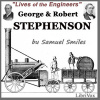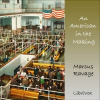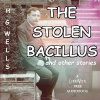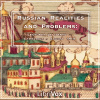Samuel Smiles - Industrial Biography: Iron Workers and Tool Makers
Samuel Smiles
100%
Speed
Summary
Short Biographies of some of the most influential engineers who developed the modern manufacturing methods behind the Industrial Revolution.Engineers and designers tend to be fairly anonymous figures in history – content to make things rather than write about them. At the time Smiles wrote “Industrial Biography” the whole of British society was undergoing massive changes driven by developments in the High Technology of the day – Mechanical Engineering.
Much of the knowledge we have of the brilliant mechanical engineers who developed the iron and machine tools of the nineteenth century was gathered and recorded by Smiles from the men themselves and from their students. Without Bramah, Maudslay, Nasmyth, and others Brunel would not have been able to build his railways, bridges and steamships. And many of their machine tools are still in use 200 years later: my own lathe looks very similar to one made by Maudslay in 1800 and almost identical to Whitworth lathes from the 1830s.
Smiles’ most famous work is “Self Help” published in 1859: the book that defined the Liberal Victorian response to the poor. In «Industrial Biography», written only four years later, the virtues of thrift, hard work, and self-improvement are woven through the stories of the great mechanical engineers, most of whom raised themselves from very humble beginnings. In some ways Industrial Biography and the other engineering biographies published by Smiles can be seen as examples to illustrate “Self Help”. (Summary by Clive Catterall)
audiobooks.club
Biography & Autobiography
Samuel Smiles
Industrial Biography: Iron Workers and Tool Makers
More from Samuel Smiles
Authorization
By logging in, you agree to the terms and conditions.














No comments